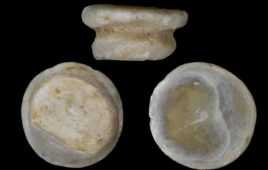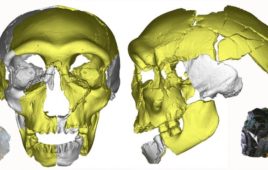 For hundreds of years, naturalists and scientists have identified new species based on an organism’s visible differences. But now, new genetic techniques are revealing that different species can show little, to no visible differences.
For hundreds of years, naturalists and scientists have identified new species based on an organism’s visible differences. But now, new genetic techniques are revealing that different species can show little, to no visible differences.
In a just-published study, evolutionary biologists at the University of Massachusetts Amherst and the American Museum of Natural History (AMNH) combine traditional morphological tests plus genetic techniques to describe new species. Groups of morphologically similar organisms that show very divergent genetics are generally termed “cryptic species.”
Lead author of an article describing their work with scale insects in the current issue of the journal ZooKeys is AMNH’s Isabelle Vea, Ben Normark of UMass Amherst and Rodger Gwiazdowski, once Normark’s doctoral student and now a postdoctoral research fellow at the Biodiversity Institute of Ontario, Guelph.
As Gwiazdowski explains, “A basic question about life is asking how many species there are on earth, and a major difficulty in answering it is defining what a species is. It’s a big problem both practically and philosophically. There are no standards for how to define species or describe new ones. We’ve come up with a practical method, combining a conventional morphological approach with a look at genetic patterns that should develop as species form.”
Though the evolutionary biologists don’t expect their new combined approach to be applicable to all species, they believe it offers a pathway to future researchers looking to negotiate the territory between traditional identification methods and powerful new genetic techniques.
As a doctoral student, Gwiazdowski trekked across North America from Mexico through Canada collecting an especially large number of armored scale insect specimens. “We set out to ask, broadly, what is a species in this group,” he says.
Species discovery efforts are usually hampered by under-sampling, he adds, but because of his continent-wide collecting, the study enjoys an unusually large sample. “You want to look for the full range of variation in a group, which includes geographic range.” In the field, he collected and preserved samples in liquid nitrogen vapor, and these specimens are preserved at the Ambrose Monell Cryo Collection at the AMNH. “This new technique is now the best on Earth to preserve tissue for future work, and Monell is a public resource any scientist can access,” he points out.
Normark notes that these insects are economically important to citrus and avocado growers, but otherwise are very obscure. “Scale insects are everywhere,” he says. “You can’t bring fruit into the country because it very often has scale insects on it, but you’d hardly know it. Even under the microscope, there aren’t a lot of characteristics to distinguish different species.”
Because they have very simple body shapes, no legs and no eyes, for example, they were particularly useful for this study of cryptic diversity in pine-feeding species, which can have “huge genetic diversity with no visible differences,” Normark adds.
The team analyzed over 400 samples using both new and old methods to identify species. At UMass, Gwiazdowski and Normark looked at genetic variation using genes throughout the genome, while at the AMNH Vea looked for morphological differences in specimens mounted on microscope slides.
She recalls, “I went over those hundreds of specimens several times looking for striking variations that could indicate a new species. Because this group has very few characters to look at, I focused on the features of the posterior called pygidium. Ultimately, I did find some characters, more or less obvious, that were constant and different enough to serve as diagnostic features of our new species. But it required hours of staring into the compound microscope.”
The result was “a mix of conventional and cryptic species,” Gwiazdowski says. “Genetic results indicated at least 10 species, where we first knew of only two.” Vea’s detailed analyses describe four new species that were previously overlooked but having subtly distinct morphological variation. The remaining species are cryptic species as-yet undescribed. He adds, “Using traditional methods alone, you’d think these cryptic species were the same and you’d be wrong.”
Overall, Gwiazdowski concludes, “Surprisingly, cryptic species are being uncovered among really big, supposedly well-known animals, like elephants and orcas. Our work on tiny scale insects just adds to a growing body of evidence that there are probably far more species in the world than conventional methods have recognized.”




